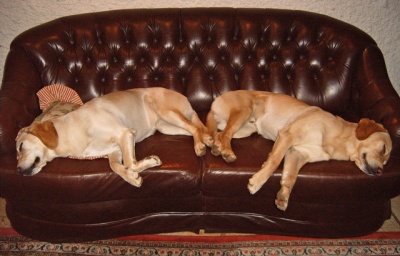Difference between revisions of "Dog leather"
| Line 9: | Line 9: | ||
| − | + | Dog [[fur]] is forbidden to sell in a lot of countries. According to REGULATION (EC) No 1523/2007 and by the German Animal Products Trading Act (TierErzHaVerbG), it is generally prohibited to sell [[Cat fur|cat fur]] and dog fur, as well as products containing such fur in the EU, or from the EU to other destinations. Crossing borders for non-business reasons is permitted. | |
| − | + | These regulations relate only to [[fur]] of dogs and [[Cat fur|cats]]. The [[Smooth leather|hairless leather]] of dogs and cats is therefore not prohibited. There is no explanation for this. Even teeth, claws or bones should not be subject to any prohibition. Nor do the hair of the animals without skin. | |
| − | + | The consumption of cat meat or dog meat is regulated in Germany. This is prohibited in Germany according to § 22 of the Food Hygiene Ordinance. | |
| − | + | In the Middle Ages, there were widespread areas of application for dog leather in Europe, which only began to disappear with technical progress. | |
| − | + | Dog furs are mostly from the East Asian region. They are labeled as "Gaewolf" (korean gae: the dog), "Wolf of Asia", "Dogue de Chine" or "Asian raccoon" in order to not frighten the customer and to avoid the term "dog". Even for professionals, it is difficult to recognize which animal a fur is from. | |
| Line 23: | Line 23: | ||
| − | + | Additional information | |
| − | * [[ | + | * [[Cat fur|Cat fur - Cat leather]] |
Revision as of 21:55, 4 December 2016
Dog fur is forbidden to sell in a lot of countries. According to REGULATION (EC) No 1523/2007 and by the German Animal Products Trading Act (TierErzHaVerbG), it is generally prohibited to sell cat fur and dog fur, as well as products containing such fur in the EU, or from the EU to other destinations. Crossing borders for non-business reasons is permitted.
These regulations relate only to fur of dogs and cats. The hairless leather of dogs and cats is therefore not prohibited. There is no explanation for this. Even teeth, claws or bones should not be subject to any prohibition. Nor do the hair of the animals without skin.
The consumption of cat meat or dog meat is regulated in Germany. This is prohibited in Germany according to § 22 of the Food Hygiene Ordinance.
In the Middle Ages, there were widespread areas of application for dog leather in Europe, which only began to disappear with technical progress.
Dog furs are mostly from the East Asian region. They are labeled as "Gaewolf" (korean gae: the dog), "Wolf of Asia", "Dogue de Chine" or "Asian raccoon" in order to not frighten the customer and to avoid the term "dog". Even for professionals, it is difficult to recognize which animal a fur is from.
Additional information
Video about leather of different animal species
Leather of different animal species - Exotic leather
Other exotic leather
- Alligator leather
- Alpaca fur
- Antelope leather
- Armadillo leather
- Bird leather
- Bull testicles
- Caiman leather
- Camel leather
- Carpincho leather
- Cat fur
- Chicken leather
- Crocodile leather
- Donkey leather
- Elephant leather
- Fish leather: Eel, shark, salmon, moray eel, stingray and many others
- Frog leather - Toad leather
- Giraffe leather
- Hippo Leather
- Horsehide - Horse leather
- Kangaroo leather
- Llama Fur
- Lizard leather
- Ostrich leather
- Pangolin leather
- Peccary leather
- Rumen leather
- Sealskin leather
- Snakeskin
- Turtle skin
- Walrus leather
- Yak leather
- Zebra hide









 a kotori web solution
a kotori web solution